Choosing the right paint color for your home can be a daunting task. The color of your walls can drastically impact the atmosphere, mood, and aesthetic of a room. While some colors are timeless and versatile, others may not be as universally appealing or may be harder to work with in certain spaces. According to design experts, there are certain paint colors that may not be the best choice for your home. In this article, we will explore 10 paint colors that are better to avoid and why these colors may not always be the best options for your walls.
1. Stark White
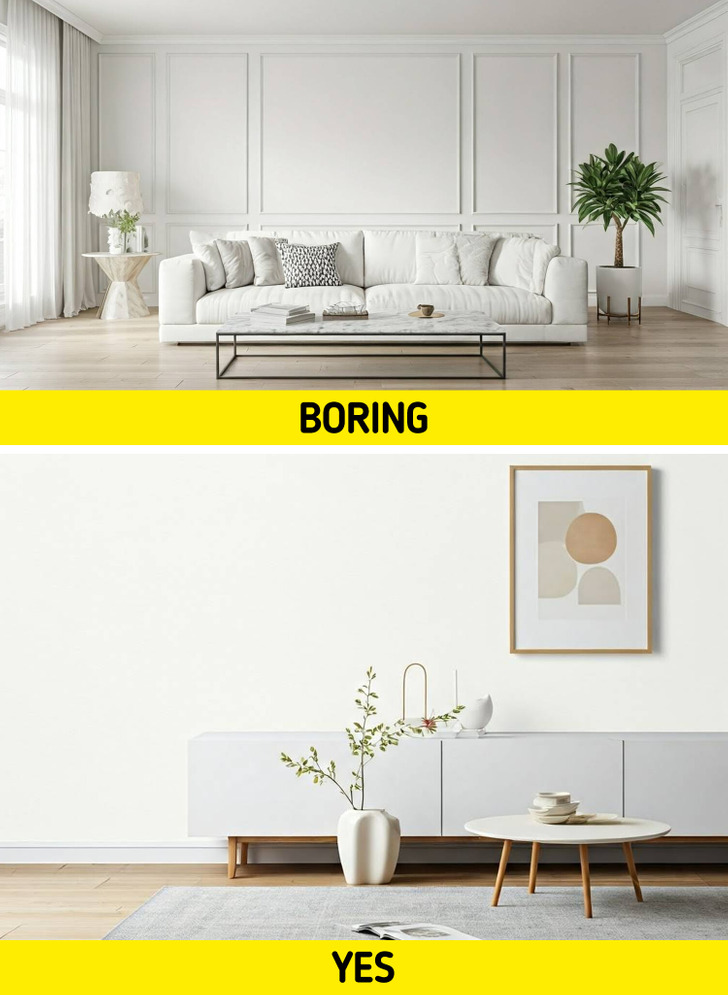
Stark white, while crisp and clean, is often considered a difficult color to pull off in most spaces. This pure, bright white can create a cold and sterile feeling, making a room seem more like a hospital or an office space. Stark white also tends to highlight imperfections in your walls, such as cracks, dents, or uneven surfaces. For a warmer, more inviting alternative, consider softer whites like off-white, ivory, or cream. These colors will give a similar effect without the harshness that stark white can bring.
2. Neon Colors
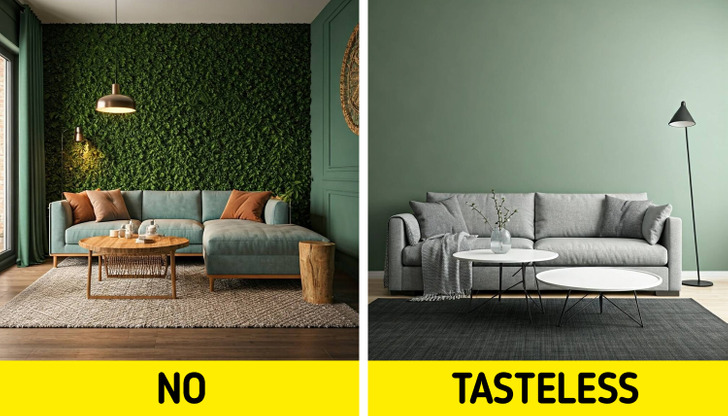
Neon colors are bold and attention-grabbing, but they may not be the most practical for home interiors. These bright, intense hues can overwhelm a room and create an uncomfortable atmosphere. Neon colors, like neon pink, green, or yellow, can be distracting and make it difficult to relax or focus in a room. Instead of neon shades, opt for muted tones or pastel versions of these colors to add vibrancy without the intensity. This will give your space a lively yet comfortable ambiance.
3. Very Dark Hues
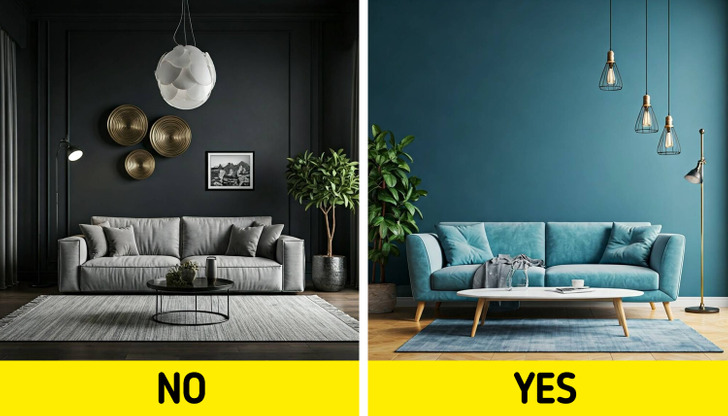
While deep and dark colors like navy blue, charcoal, or deep purple can add a sense of drama to a room, using them excessively or on all walls can make the space feel smaller and more confined. Very dark hues absorb light and can create a heavy, oppressive atmosphere. If you want to use dark colors, consider incorporating them as accent walls or in smaller spaces. Pairing dark hues with lighter colors or using them sparingly can help balance the room and prevent it from feeling too enclosed.
4. Browns
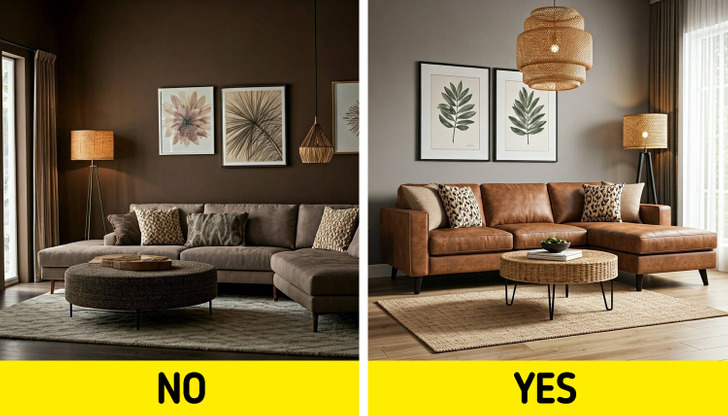
Brown is a color often associated with warmth and comfort, but when used in large quantities, it can make a room feel dull, heavy, or lifeless. Many shades of brown, such as dark chocolate or rust, can look outdated and take away from the freshness of a modern design. While brown can work in certain rustic or earthy design schemes, it’s best used in moderation. For a fresher look, opt for neutral tones like taupe or beige, which can create a warm, inviting environment without feeling too heavy.
5. Bright Red
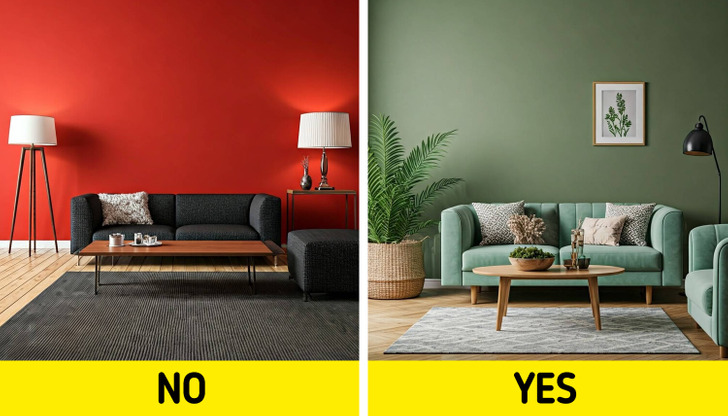
Bright red is an attention-grabbing color that can evoke strong emotions, but it is often better suited for accent walls or smaller spaces rather than being used throughout an entire room. In large quantities, bright red can create a sense of urgency or restlessness, making it difficult to relax or unwind. Red is known to increase energy and stimulate appetite, which is why it is often used in dining rooms or kitchens, but when overused, it can overwhelm the senses. If you love red, try using deeper or muted versions like burgundy or terracotta, which provide a similar effect without being overpowering.
6. Icy Tones

Icy tones, like pale blue, icy lavender, or mint green, may seem refreshing, but they can often create a cold, unwelcoming environment. These colors tend to feel distant and sterile, especially when used in large amounts. If you’re drawn to cooler shades, consider warmer variations of icy tones, such as soft pastels or muted blues, which provide a calming atmosphere without the chilliness of icy hues. By adding some warmth, you can create a more inviting and cozy space.
7. Saturated Colors
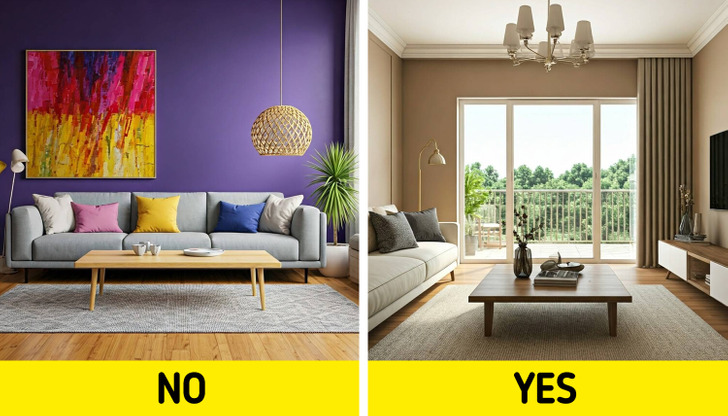
Saturated colors are those that are vivid and intense, such as emerald green, bright yellow, or royal purple. While they can add drama and personality to a space, these colors can also be difficult to live with in large doses. Saturated colors can make a room feel visually overwhelming, and they may clash with other colors or design elements. To avoid this, use saturated colors in small amounts or as accents rather than on all walls. Pair them with neutral tones to create a balanced and harmonious design.
8. Lime Green
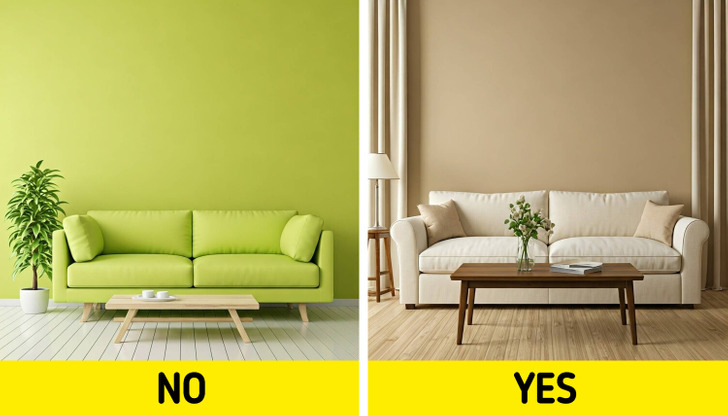
Lime green, though trendy and eye-catching, can be challenging to work with in a home setting. This bold and intense shade of green is often too bright and jarring to be used as the main color in a room. Lime green can evoke feelings of energy and excitement, but it may not create the calm and cozy environment many homeowners desire. If you’re a fan of green, consider softer shades like sage, olive, or mint. These colors bring nature-inspired tranquility to a room without overwhelming the space.
9. Peach
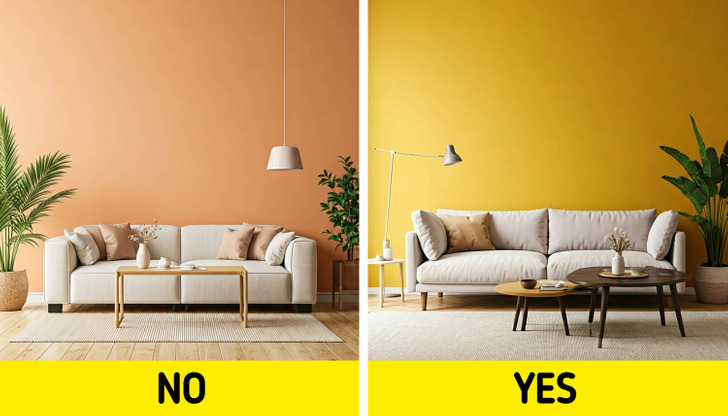
Peach is a color that has fallen out of favor in recent years, largely due to its tendency to appear dated and overly sweet. While it can work in specific vintage or retro designs, peach is generally not a color that suits modern aesthetics. Peachy tones can feel a little too warm and may not offer the same versatility as other neutral or soft pastel hues. For a similar effect, try soft pinks, light corals, or blush tones. These colors offer a contemporary twist on the peach look while still providing warmth and softness.
10. Overly Trendy Colors
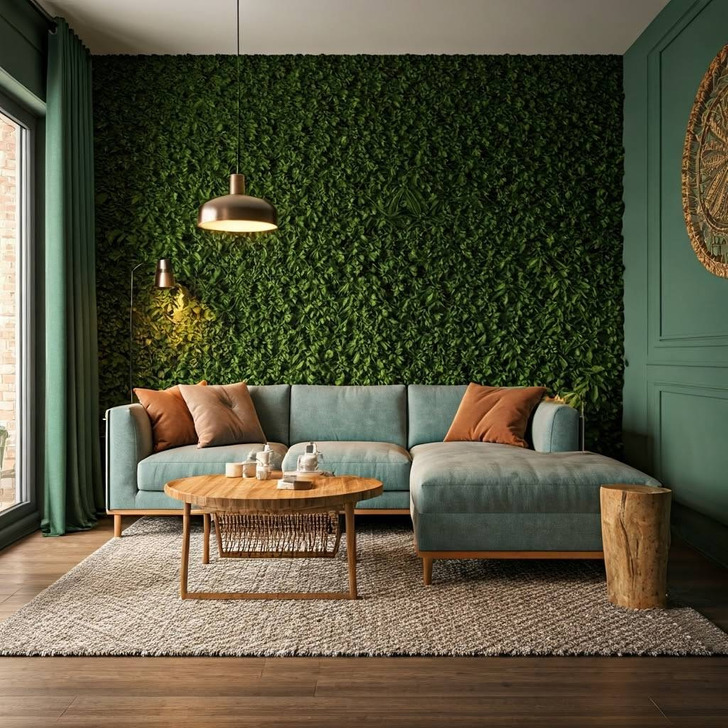
Trendy colors may seem appealing at the moment, but they often lose their appeal over time. Colors that are in vogue one year can quickly become outdated the next, leaving you with a room that feels disconnected from your long-term style. Overly trendy colors, such as neon pink or ultra-violet, may look fresh now but can feel out of place in a few years. Instead of opting for the latest color trend, choose timeless shades that can stand the test of time, like muted tones, classic neutrals, or shades inspired by nature.
11. Matching Everything
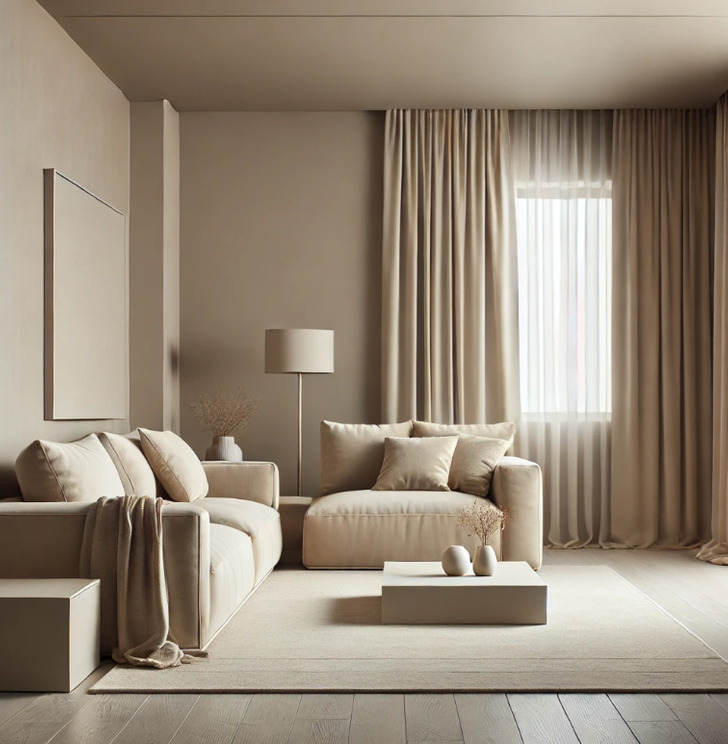
While it might seem like a good idea to perfectly match every element in a room, over-matching can result in a monotonous, uninspired design. A room that has all walls, furniture, and accessories in the same color or pattern can feel too rigid and lack personality. Instead of matching everything, aim for a cohesive look by mixing complementary colors, textures, and styles. A balanced combination of different elements can create a more dynamic and inviting atmosphere, giving the space more character and warmth.
Conclusion
Choosing the right paint color for your home is more than just picking something that looks nice. It’s about creating a space that reflects your personal style while also ensuring that it’s comfortable and functional. While some colors, like stark white, neon hues, and bright red, can make a bold statement, they may not always contribute to the kind of environment you want to create in your home. Instead, focus on colors that provide balance, warmth, and versatility. By being mindful of color trends and selecting shades that complement the natural light, size, and purpose of each room, you can create a home that feels inviting and timeless. Always remember that paint is one of the most transformative elements in interior design, and choosing the right colors can truly elevate your living space.


